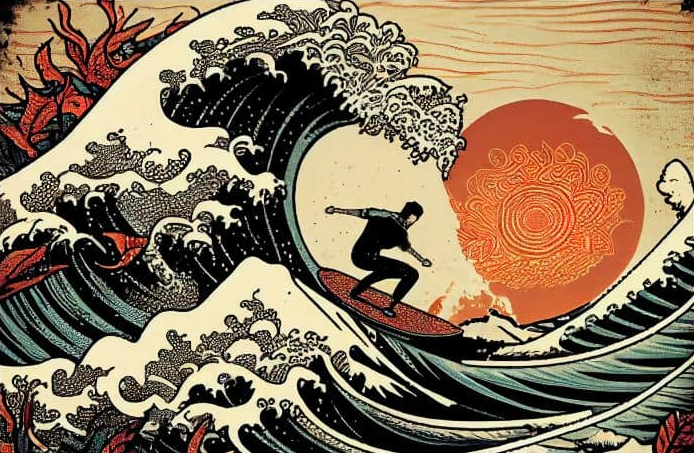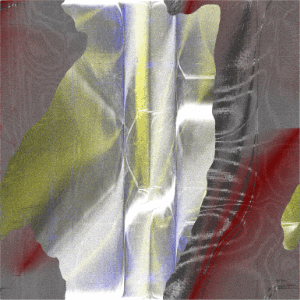Contemplative mindscapes
Touching in most emotions and a subjective sense of time in thoughtful electronic music are explored by sound researchers Satori Ashikawa, Haruomi Hosono, Takeshita Kokobu, Yoshimatsu Ojima, and Ken Ikeda. These sound producers bring to the fore sweetly flavored ambient tales to ravish our spirit with sheer delight. Their contemplative mindscapes / mood-scapes are cornerstones of ambient music. Around a relative similar period of time, the early/mid 80s Steve Roach, Michael Stearns, David Hykes, Harold Budd, and a few others, were giving a new impulse to space ambient music with a spiritual coloration. Contrary to other musical ambient scenes coming from different parts of the world, the Japanese one is not essentially focused on smooth synth instrumentation—except the odd electronic spaciness of Fumio Miyashita, the new-age mantras of Hiroki Okano or Tomita—which is here to assist various sound manipulations, discreet electronics and classically tinged minimal acoustic phrases of melodic quality, minimal patterns from the glockenspiel.
We are at the border of classical Japanese music, avant-garde, and the sonic worlds of ambient music, it is particularly noticeable in the lush and textured Through The Looking Glass by Midori Takada or Reminiscence by Motohiko Hamase. Minimal feedback and looped technics took up from Terry Riley’s are recognizable on the exquisite and mysteriously ecstatic trip of KI-Motion by Mkwaju Ensemble. Tetsu Inoue will honor once more and in a more definitive manner Terry Riley fascination for journeying / spiraling, and uplifting spiritual music in his Ambient Otaku decades after Mkwaju Ensemble.
For an overview or an introduction to these pioneering years the Kankyo Ongaku box edition from Light in Attic’s Japan Archival series can be way recommended.
The recent renewal and interest in ambient sounds / atmospheric electronic music realms now enters in a fragmented multiplicity of styles, declinations, and sub-genres with not so tranquillizing effects as in the so called Japanoise—Merzbow, Aube, Keiji Haino—and other artists carried on melting relaxing ambient tones with traditional music and environmental micro sounds while Susumu Yokota was starting to push the experimental side on an other level and more acquainted with modern electronic music, microhouse and chillout vibes. The ritual effervescence of ambient tales by Tetsu Inoue brings up minimalist technics into contemporary electronic art for something innovative and dynamic.
Post-modern time and new millennium ambient music from Japan shows deference toward zen-inspired environmental music from pioneering sound artists as in the almost sound therapeutic Dedicated To The Island by Kaoru Inoue whose detached piano minimal airs floating a carpet of a green field recordings can also admit parallel with the reflective and introspective piano ambient of Space as an Instrument by Felicia Atkinson (to be released later this year). With a pleiad of micro and indie labels coming from every part of the world—Hibernate, Constellation Tatsu, Dronarivm, Stereoscenic—and with this growing trend towards digital drone music, sacred chords and experimental post-rock minimalism (on the path of the band MONO) Japanese ambient-esque musicians embrace even wider and deeper realms than before with a handful of albums which cultivate a highly vibrant sonic sounding poeticism.
Meditative sonic journeys and colorful emotional palettes we can appreciate in soundscapes recorded by Chihei Hatakeyama, Yui Onodera, Tomoyoshi Date or Hakobune often come to the fore as representatives of the new generation. Their main idea still relates to the “oceanic feelings” concept and typical sea of velveting sound waves that sooth the mind, generally obtained by electronic equipment, e-guitar continuums, and occasionally morphed, sequenced acoustic motifs, tonal patterns, soft noises which come up from a vast cloud of reverbs, the whole thing being seconded by a peaceful melodic sensibility.













![Ndorfik & madebyitself :: Solos EP (People Can Listen) — [concise]](https://igloomag.com/wp/wp-content/uploads/2025/04/ndorfik-madebyitself-solos_feat-75x75.jpg)








